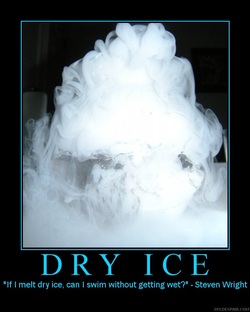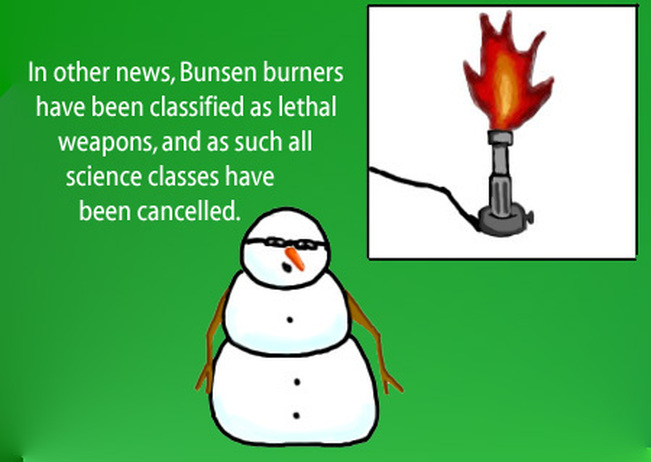The Wonders of Dry Ice

Dry ice is the solid form of carbon dioxide and has an atmospheric temperature of about -78.5 degrees Celsius. The interesting thing about dry ice is that it can be as dangerous as having an open flame against your skin if it is not held with protective gloves. Also, as dry ice sublimates (from solid to gas phase transition) it can release lots of carbon dioxide gas and if not properly ventilated can result in carbon dioxide poisoning. There have been reported cases of people dying from improper ventilation when working with large amounts of dry ice.
Dry ice is often confused with its aesthetic cousin, liquid nitrogen. While both give the same fog-like clouds that wow the crowds and are very interesting when observed scientifically, liquid nitrogen is twice as cold at -196 degrees Celsius. It also differs from dry ice in the fact that it gives the same effect while being a liquid while dry ice has to sublimate in order to create the fog. Also, liquid nitrogen and dry ice differ in their uses with dry ice being used widely in commercial and industrial applications (not to mention scientific) with liquid nitrogen tending to be used primarily in medical environments or in cryogenic storage because of its extremely low temperature.
Within this site you will find all the information needed about dry ice, its physical and chemical properties, discovery and production, structure and bonding, uses (past, present and future) and cool stuff, a page which includes videos of both liquid nitrogen and dry ice being used in stupid and creative ways!
Dry ice is often confused with its aesthetic cousin, liquid nitrogen. While both give the same fog-like clouds that wow the crowds and are very interesting when observed scientifically, liquid nitrogen is twice as cold at -196 degrees Celsius. It also differs from dry ice in the fact that it gives the same effect while being a liquid while dry ice has to sublimate in order to create the fog. Also, liquid nitrogen and dry ice differ in their uses with dry ice being used widely in commercial and industrial applications (not to mention scientific) with liquid nitrogen tending to be used primarily in medical environments or in cryogenic storage because of its extremely low temperature.
Within this site you will find all the information needed about dry ice, its physical and chemical properties, discovery and production, structure and bonding, uses (past, present and future) and cool stuff, a page which includes videos of both liquid nitrogen and dry ice being used in stupid and creative ways!

